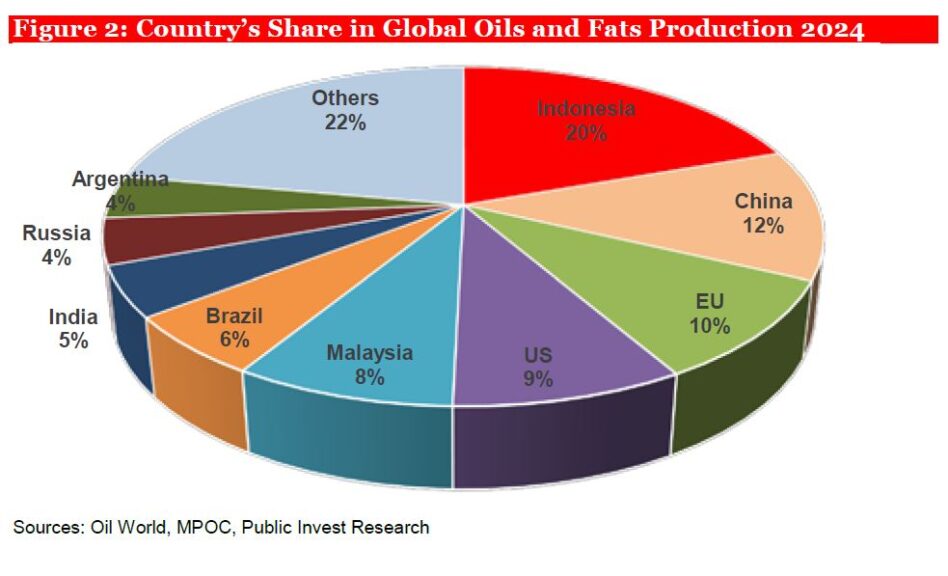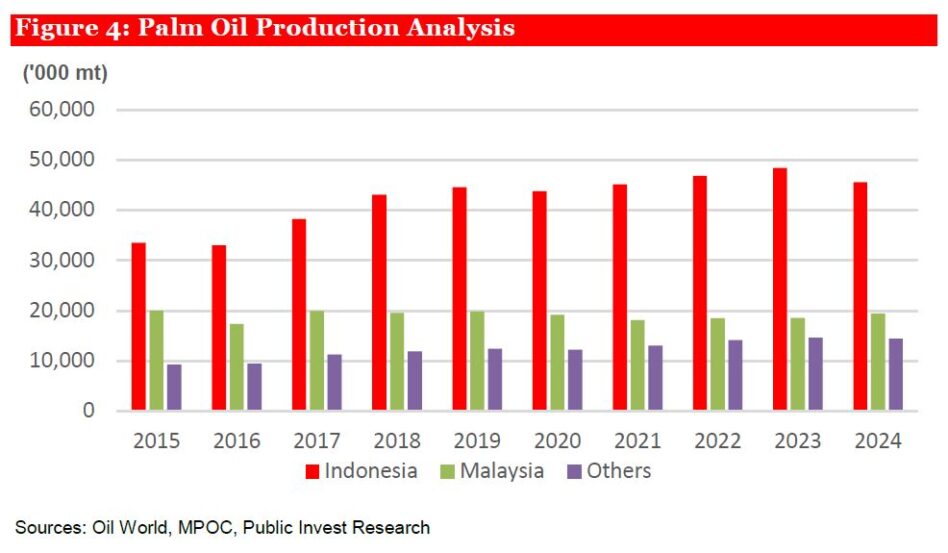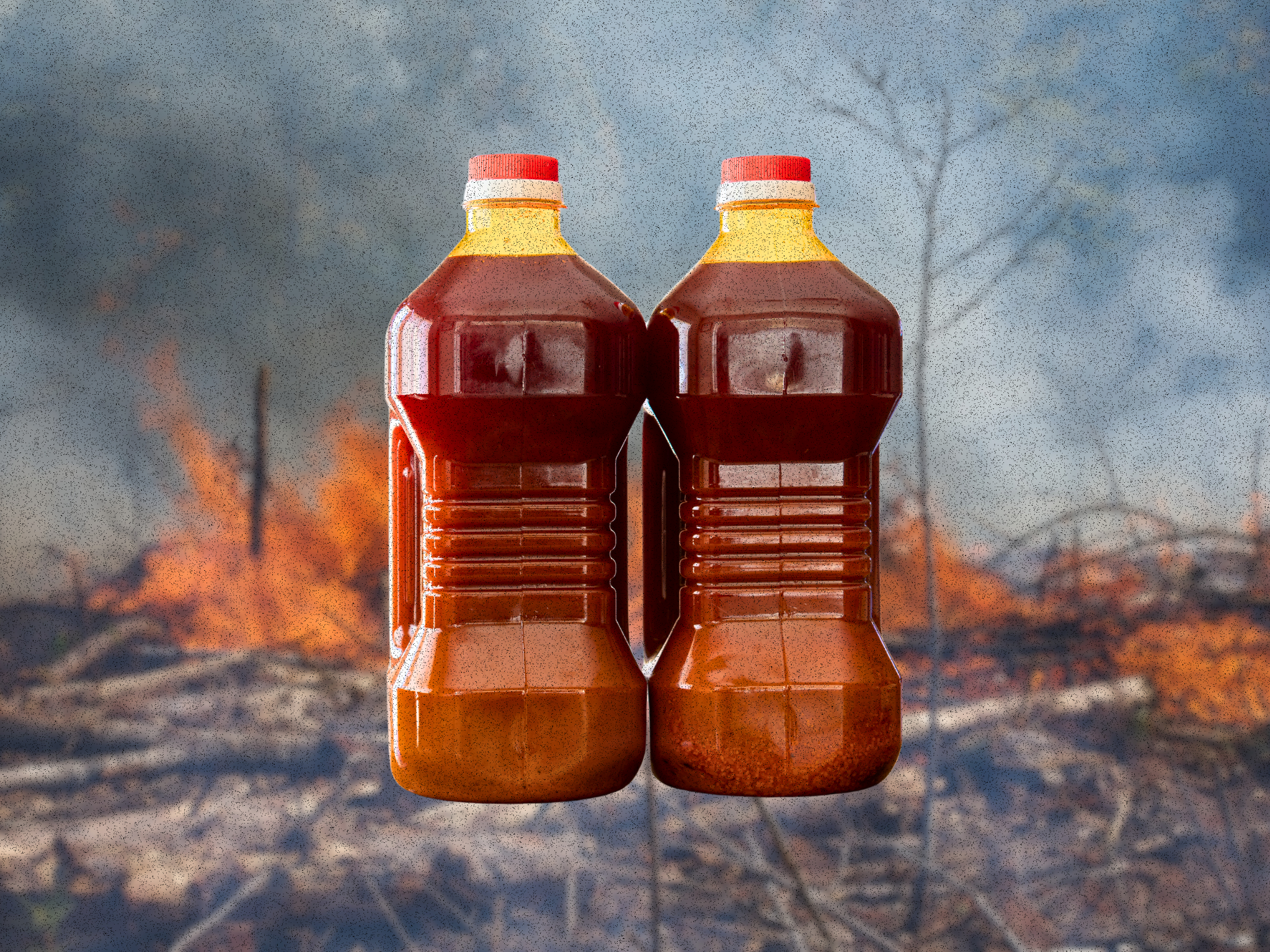PUBLIC Investment Bank (PIB) expect crude palm oil (CPO) prices in the second half of 2025 (2H25) to remain within the RM4,000–4,300/mt range, supported by a stabilising inventory trend after surpassing the 2 mil mt level.
At the point of writing, CPO futures hit RM4,330/mt. Export momentum, particularly to India, is expected to improve, driven by the wide palm oil–soybean oil price differential and low inventory in the country.
“In the absence of new catalysts, we maintain a Neutral outlook on the sector, with a full-year CPO price forecast of RM4,200/mt,” said PIB.
Indonesia consumed approximately 7.42 mil kilolitres of biodiesel as of 16 July, representing 47.5% of its full-year target of 15.62 mil kilolitres.
This is projected to boost domestic palm oil usage by 2 mil mt, tightening export availability. The BPDP Agency’s estimated collection of 30tln rupiah in export levies is sufficient to fund the B40 programme.
The potential rollout of a B50 mandate could serve as a key catalyst in 2026, potentially increasing domestic consumption by an additional 3 mil mt and mitigating the negative impact of higher US tariffs.
Forest and land fires in Indonesia’s Sumatra region have surged, with 1,292 hot spots detected by the Meteorology, Climatology, and Geophysics Agency (BMKG), a 14-fold increase in 10 days. Riau province is the worst hit, with 582 hot spots.
While the extent of plantation land affected remains unknown, prolonged dry weather could negatively impact fresh fruit bunch (FFB) output over the next 1–2 years.
Palm olein continues to trade at a premium of 454 yuan/mt to soybean oil on the Dalian Commodity Exchange, despite palm oil’s current discount of USD222/mt to Argentine soybean oil.
This pricing misalignment discourages Chinese buyers from switching to palm oil, prompting increased soybean crushing.
Based on our calculations, palm olein prices would need to drop by at least USD63/mt to reach parity. Historically, palm oil has traded at a USD91–184/mt discount to soybean oil over the past decade.
Brazil, Argentina, and the US collectively account for 80% of global soybean production.
Output is expected to rise 6% YoY to 421m mt in 2024/25, with Brazil contributing a record 169m mt and expected to reach 175m mt in 2025/26. Global production is forecasted to grow another 1.3% to a record 427m mt in 2025/26. 
The US has imposed a 25% tariff on Malaysian palm oil products, compared to 19% for Indonesian exports.
While this makes Malaysian products less competitive, the US accounted for less than 3% of Malaysia’s palm oil exports in 2024, limiting the impact.
The US Environmental Protection Agency (EPA)’s proposal to cut the renewable identification number by 50% for fuels made from foreign feedstocks, as part of 2026-2027 renewable volume obligations could artificially drive up the soybean oil and biofuel prices in the country.
Soybean oil price currently trade at USD1,223/mt on Chicago Board of Trade compared to Brazil’s USD1,167/mt and Argentina’s USD1,112/mt.
According to the GlobalData Agri report, there is sufficient domestic feedstock to meet the EPA’s projected production volumes of 4.3 bil gallons in 2026 and 4.6bn gallons in 2027 while the US biomass-based diesel demand is expected to reach 7 bil gallons by 2027 and grow to 9bn gallons by 2030.
Meeting that demand, however, will require continued access to global feedstock markets.
EPA’s proposal to cut the renewable identification number value by half fo fuels made with imported feedstocks would limit overall biomass-based diesel market growth, threaten future investments and limit consumer access to American-made fuels.
Various study estimate that the policy shift would introduce significant cost pressures across the renewable fuel supply chain.

By reducing the imported feedstocks, it would effectively create a USD250-400/mt premium for domestic feedstocks.
These price pressures are expected to draw more domestic feedstocks away from food and other non-biofuel uses.
Despite higher minimum wages and fertiliser prices in 1H25, we anticipate lower production costs in 2H, aided by increased FFB yields and palm kernel credits.
The mandatory 2% EPF contribution for foreign workers effective October 2025 is expected to trim plantation earnings by less than 1%.
Malaysian oleochemical producers face mounting pressure from higher input costs as palm kernel oil is now subject to a 5% sales and service tax under the expanded SST regime.
This applies to refined, bleached, and deodorised (RBD) palm kernel oil and palm kernel shell. Price volatility in palm kernel oil further complicates cost hedging, while the stronger Ringgit negatively affects revenue.
We expect CPO prices to trade in the range of RM4,000-4,300/mt level for the 2H, driven by aggressive restocking activities ahead of the Diwali festival celebration amid current low inventory levels.
Year-to-date (YTD), CPO price averaged at RM4,350/mt while CPO futures currently traded at RM4,330/mt. We maintain our 2025 CPO price forecast at RM4,200/mt. —July 25, 2025
Main image: Green Queen




